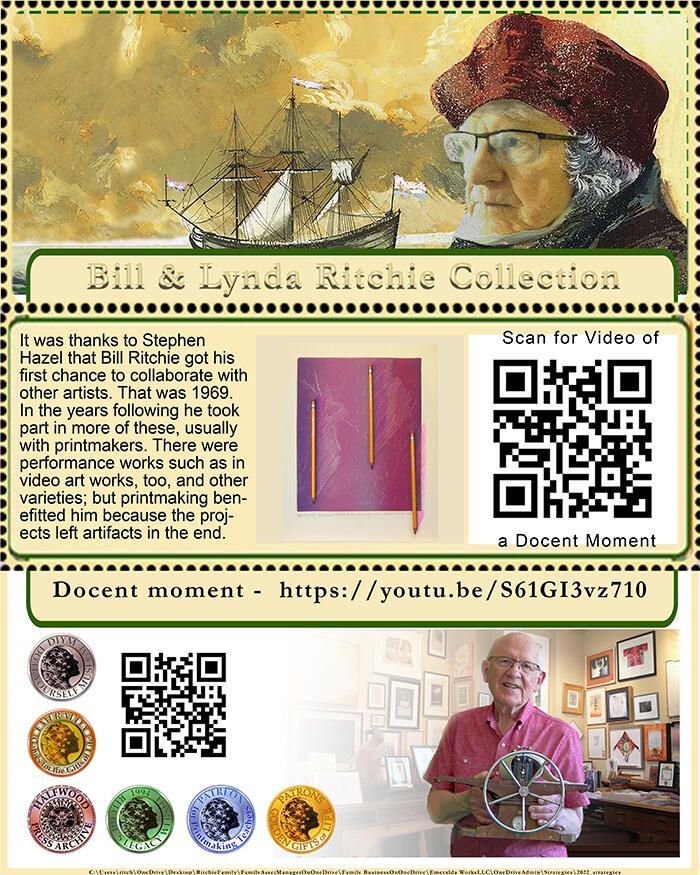Collaborations Folder Cover

Collaborations take many forms
Printmaking may be the first art form to be collaborative, a social art form. In the scenario of two prehistoric people working in a cavern, their handiwork in progress on the wall of the cave, one is painting, the other uses her hand as a stencil, blowing a spattering of paiint over it it to leave her mark. Who made the paint? Maybe it was the painter, but it raises the question of the need for other people. There is an audience, too, who will watch the works in progress, maybe, or who will come along thirty-thousand years later. As a printmaker, painters were my teachers and printmaking was a cousin to painting (and usually a poor cousin). What my teachers did not know (because they were college-taught, subsidized artists) was that collaboration got the artists where they are. It was printers who spread the word. Sometimes it was the painter, like Rembrandt, who made his own prints. The thread of collaboration in my life became evident with Stephen Hazel's initiation of projects like the "Bill Ritchie Memorial Hanga Workshop" in the early 1970's, and formation of Multicom. Community was his goal. It was not painters and sculptors who touted community development, communication, sharing information, and collaboration for the sake of education and mutual benefits. It is printmaking. Print is the ancestor of all science, technology, reading and writing, engineering, the arts, mathematics and its cousin, music. Collaboration is the word; one might as well say, "In the beginning there was print."
